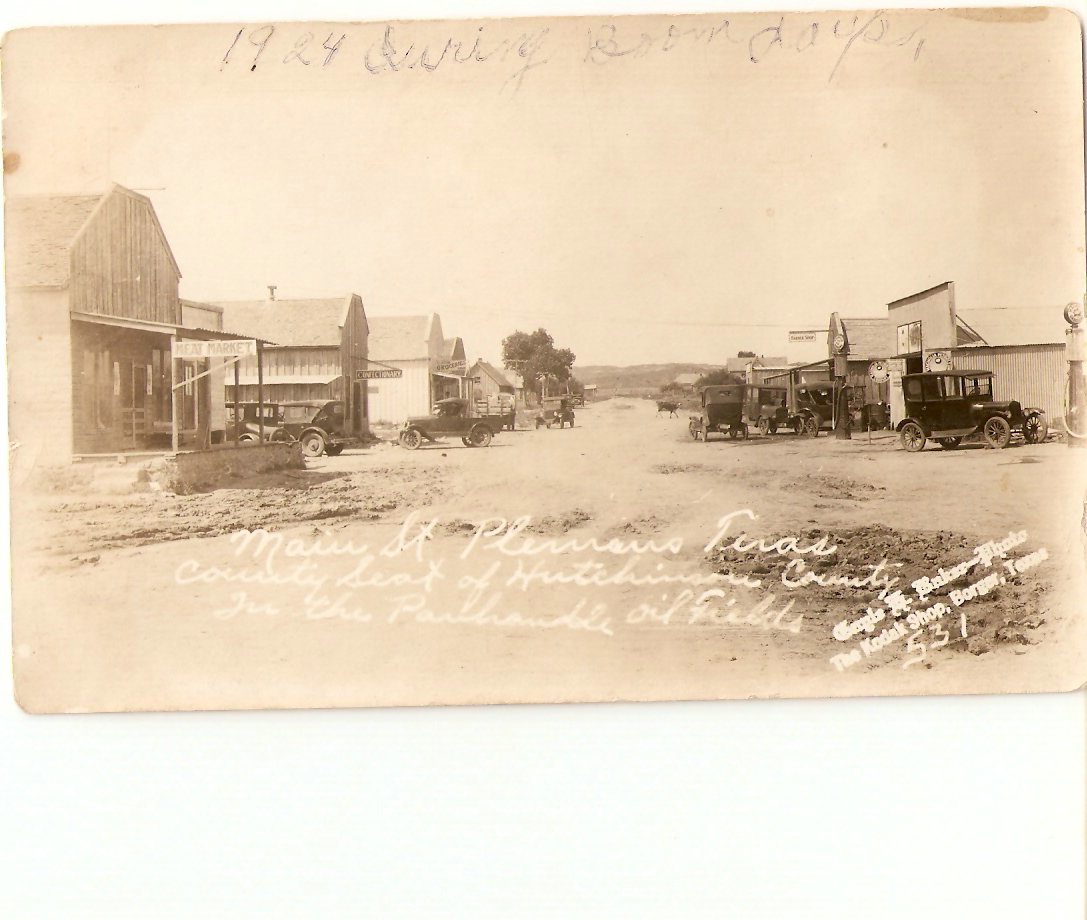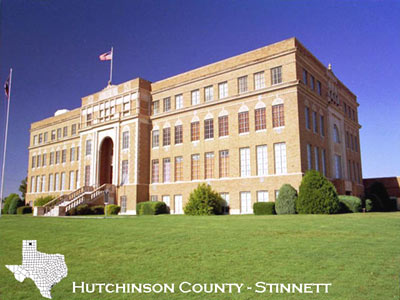|
The Night They Stole the Courthouse - By Jim Foreman
Barney Plemons had an unusual horse with the uncanny ability of being able to find its way around quicksand bogs in the Canadian River which lay like a barrier across the Texas Panhandle. The invisible quicksand bogs could swallow up a man, a horse or even a wagon in a matter of minutes if one should accidentally stumble into one. What made them even more formidable was that they constantly moved and where it was safe to cross one day might spell peril the next. It's not known how Barney discovered the unique abilities of his horse but he saw an opportunity. He found a bend in the river with easy access to either side, claimed 80 acres on either side of the river and in 1893 began his business of leading people across the river. It became known as Plemons Crossing and his river guide business boomed. Other businesses sprang up near the crossing and soon a small village began to grow with a blacksmith, mercantile store, harness shop, livery stable and a boarding house on either side the trail headed toward the open range land to the north. Something like fifty people claimed Plemons Crossing as their home when the Panhandle was divided up into twenty-six counties in 1901 so the name was shortened to Plemons and it was listed as the county seat of Hutchinson County.

The Canadian River remained a barrier to travel to the north with the Plemons Crossing remaining about the only place one could cross it. The town grew slowly over the next twenty years to about 250 people and more than a dozen business buildings lining the dirt street. They had built a larger court house and a school. 1926 was a big year for Plemons with the opening of the half-mile long bridge across the Canadian just south of town which gave them a considerable increase in traffic. That was also the year the Chicago and Rock Island Railroad between Amarillo and Liberal, Kansas came through, bypassing Plemons by about eight miles to the west. Then the town of Stinnett was founded as a shipping point on the railroad where it crossed the Plemons to Dumas. Within four months some $400,000 worth of lots had been sold in the new town of Stinnett and the population stood at 2500 people, ten times that of Plemons. About the only benefit Plemons could see was the people who traveled the nine miles from Stinnett to file their deeds at the court house. Soon most of the people who worked at the court house had moved to Stinnett.
There was considerable animosity between the two towns until one day a contingent from Stinnett announced that they were going to sponsor a big barbeque and dance in appreciation of the people of Plemons. The party was scheduled for Saturday night under some big pecan trees just south of town. Pits were dug and fires were built in them to burn down to glowing coals, then the burlap wrapped quarters of beef were lowered over the coals and the tops sealed. Tubs of cold beer were brought in and lanterns were hung in the trees to light the festivities. Just as darkness fell, the pits were opened and the succulent beef was brought to tables where potato salad, bread and beans were waiting.

Following the meal, fiddles, harmonicas and guitars began to play and the men of Plemons found the ladies from Stinnett more than willing dance partners and the party went on till well after midnight. Little did the people of Plemons realize that while they were dancing and having a good time, trucks were backed up to the court house and all the chairs, desks and country records disappeared into the night. On Monday morning the Hutchinson County court house opened in what everyone had been told was to be a dance hall in Stinnett. A petition for an election to move the court house was filed the next day and it passed by almost 90% in favor. A little over a year later the largest court house north of the Canadian River was dedicated. The four story brick and stone building cost $28,000 to build.
UPDATE:
I lived in Plemons, TX, from the time I was born until I was five years old. My father, George Graham, was the school superintendent of the school, to which students from all the surrounding oil camps were bussed. My friend was Nellie Beasley, who must be one of the writer's relatives. Nellie and I rode her shetland pony, Bum, all over the area. I have a picture of Nellie and me in our flower girl dresses for, I think, a wedding of one of the school teachers. Nellie walked the aisle but I refused. John Jake Whittenberg, the mentally challenged son of the publisher of the Amarillo Globe News, lived there with a caretaker so as not to embarrass the wealthy family. Every day the caretaker put a quarter and a soda pop on a post a mile from the house so that John Jake would get his exercise by walking down to get it. A rancher also lived in Plemons; and a man we called Old Man Hoff, who lost both sons in World War II (I remember the telegrams which came informing him of both tragedies); a hermit named Ed, who caught rattlesnakes and delivered wild plums to my mother occasionally; and the janitor of the school, Perry (I forgot his last name) and his wife, Myrtle. They played dominos with my parents almost every night. My brother, Ray, was six years older than I was and he used to ride his donkey, Sugar, several miles to spend the night with friends. We had no phone in our house and for the first four years, no running water or electricity. The only radio was at the school. There was, indeed, a lot of quicksand, and sometimes cattle would have to be pulled from it. There was a signal about the safety of the river crossing involving hanging a loaf of bread from a tree, but I have forgotten the details. During World War II, when sugar was rationed, people from our church in Philips (10 miles away), brought sugar out to our house after church on Sunday night and we would have homemade ice cream because we had a cow to supply the milk. My mother made my dresses from feed sacks, which were printed in pretty fabric for that purpose. We grew our own food, had chickens and a pig, and I don't remember ever going to a grocery store in Philips but perhaps we did get some food there. We definitely went to the laundromat in Philips once a week to wash our clothes. I have a lot of memories about Plemons.
Peggy Graham Sherertz
|
![]()